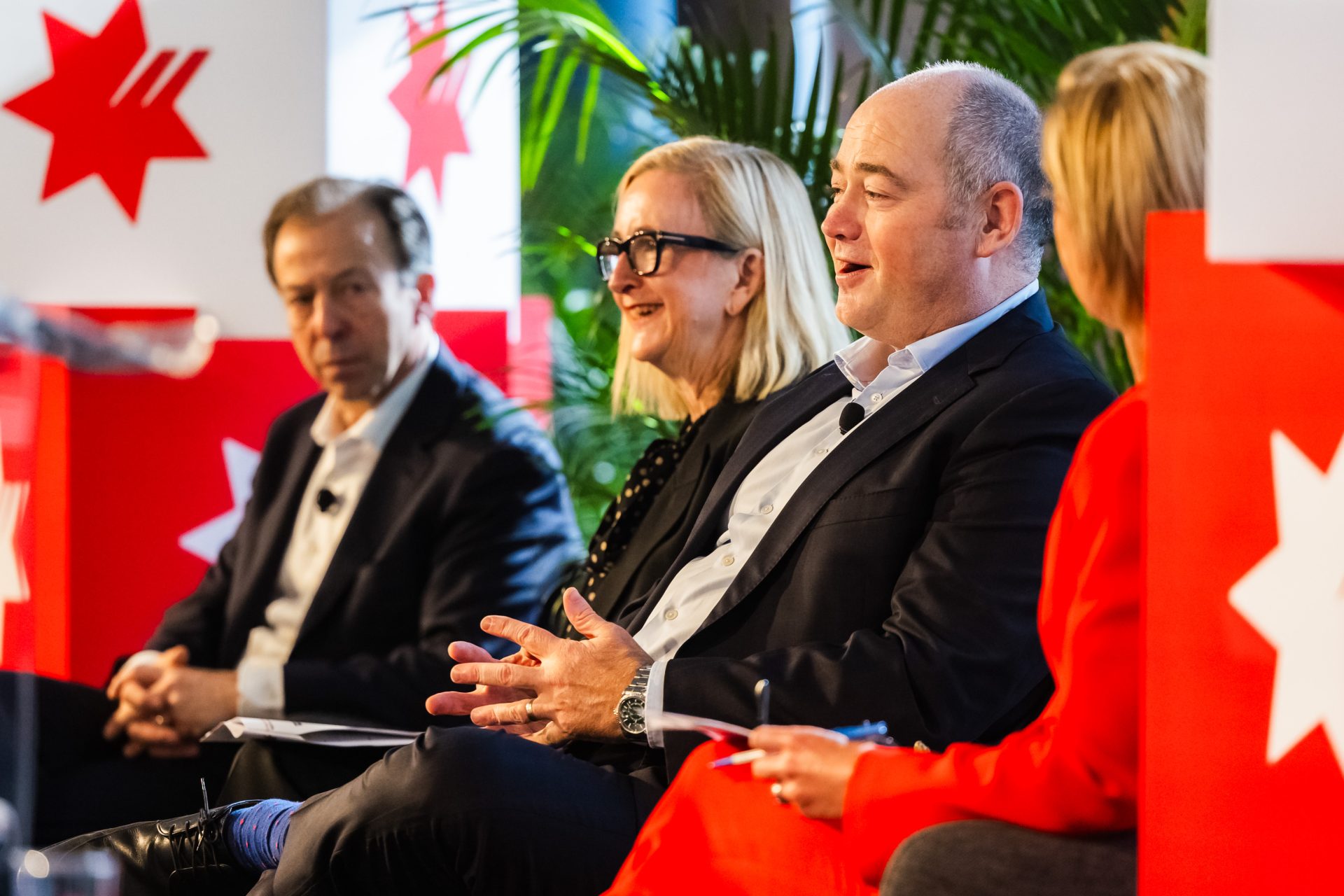A partly-owned NAB platform designed to settle carbon-credit transactions will help drive an expected 15-fold surge in demand for the keenly-sought environmental offsets, as companies implement their plans to achieve net zero greenhouse gas emissions by 2050.
NAB Group Executive, Corporate and Institutional Banking, David Gall, said London-based Carbonplace, founded by NAB and eight other global banks, was expected to go live before the end of this year, with carbon credits expected to play a particularly important role for businesses over the shorter-term horizon to 2030.
“Over the longer term, I’m hopeful that technology and innovation, such as hydrogen and other breakthroughs, will be sufficiently advanced to produce the required level of emissions reduction,” Mr Gall said.
Companies buy carbon credits to compensate for emissions which are difficult to remove or reduce in industries such as steel and cement production.

The credits fund verified projects like reforestation, revegetation and improved forest management to help remove or prevent the release of greenhouse gas emissions into the atmosphere.
Last week, Carbonplace’s owners announced the formation of the company, a $US45m capital injection, and the appointment of a chief executive, Scott Eaton.
The money, contributed by banks with $US9 trillion in total assets, will be used to scale up the platform, recruit more staff and expand services to more lenders and carbon-market participants, including registries and carbon marketplaces.
Carbonplace has already facilitated a number of pilot transactions, notably global payments company Visa’s purchase last May of carbon credits from leading offsets developer Sustainable Carbon, which were certified by Verra.
Among other things, the transaction highlighted how the two participating banks, including NAB, can deploy their existing capabilities in areas such as anti-money laundering and know your customer to address some of the challenges holding back the development of voluntary carbon markets (VCM).
VCMs, which passed through $US1bn in turnover in 2021, account for about five per cent of the offsets market, with the regulated or compliance segment holding the rest.
There are a few key differences between VCMs and the much larger regulated markets, which are created and regulated by mandatory national, regional or international carbon reduction regimes.
With the former, the credits are purchased voluntarily rather than for compliance purposes, providing direct, private funding to abatement projects which would otherwise not get off the ground.
The cost of assurance is also higher in the compliance market due to some manual processes.
NAB, for its part, has been working with its technology partners to solve the global challenge of how to accurately measure soil carbon using satellite technology.
This would produce the double benefit of helping farmers better understand their soil carbon levels and improve land management, potentially leading to new income streams as offset producers.

Mr Gall said he expected the current dominance of compliance markets to recede as VCMs expand their market share.
“It’s just the different life-stages of the two markets,” he said.
“Also, there’s nothing to stop the compliance market using our settlement platform, so you could have (regulated) Australian Carbon Credit Units (ACCUs) sitting on the Carbonplace platform.”
NAB is in a good position to assess the prospects of VCMs, having retained management consultants McKinsey to review the carbon-credit market and its potential.
The bank also has unique insights on the supply side from its position as the nation’s largest agribank with a 35 per cent market share, and on the demand side through its market-leading business bank.
“As a significant business bank, we know a lot of companies will need to buy a lot of carbon credits to meet some of their (emission-reduction) targets,” Mr Gall said.
As part of the solution to the climate challenge, carbon credits need to be transparent and demonstrably effective.
Recently, however, the integrity of the market has been called into question, with claims both locally and offshore that the level of carbon abatement has been overstated.
Last December, the independent Chubb review of ACCUs found that while the local, regulated scheme was “fundamentally well-designed when introduced”, it could still be improved by applying knowledge gained from 11 years of operation.
The review commended changes to clarify governance, improve transparency, facilitate positive project outcomes, and enhance confidence in the scheme’s integrity.
Mr Gall welcomed the findings, noting there was “no suggestion that the scheme was fundamentally flawed”.
“By inference, a lot of what was done was sound but can be enhanced by the recommendations, which will continue to build confidence,” he said.
“I definitely expect there will be some setbacks, and unfortunately you will have some examples of fraud, and from time-to-time there will be some pretty massive volatility in the carbon price.
“So this is not for the faint-hearted, and when you put all those things together, you only want well-informed customers who understand the full picture.”
Carbonplace fits neatly into one of NAB’s core strategies of supporting its customers through their decarbonisation transitions.
Some companies in hard-to-abate industries face complex and challenging tasks to achieve net zero targets by 2050.
Leaving aside questions about the integrity of the offsets market, Carbonplace’s use of an Ethereum blockchain to create a transparent, auditable trail of transactions has also inspired debate, given the challenges faced by other blockchain-based projects.
Any concerns were misguided, according to Mr Gall.
“We’ve seen the technology working, and in the transactions we’ve done and the way we’ve tested the technology we haven’t found any cause for concern.
“That’s not to say there won’t be challenges, but I think it’s sufficiently evolved now.
“The real question is going to be if it can truly scale; not if it can work. But we’re not seeing anything that seems to be a showstopper.”
While the project was not without risk, Mr Gall said he had been encouraged by the quality and standing of the banks which had chosen to invest.
More banks were likely to join Carbonplace, including some from the US.
“That part of it is really important, because the onboarding and the ramp on and off is via the banks,” he said.
“NAB customers can get access to Carbonplace, and for the right customer that’s a pretty good reason to bank with NAB.”







